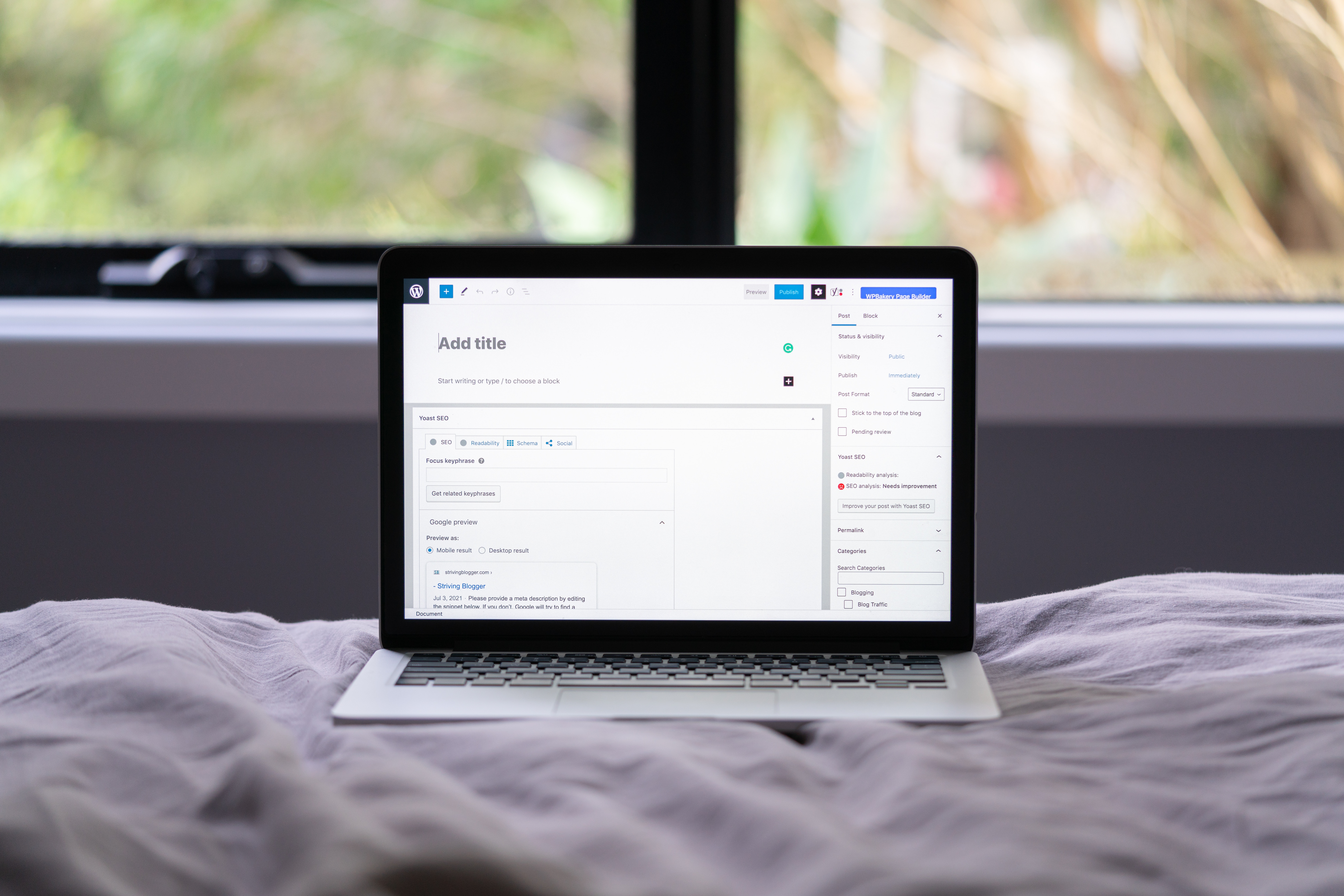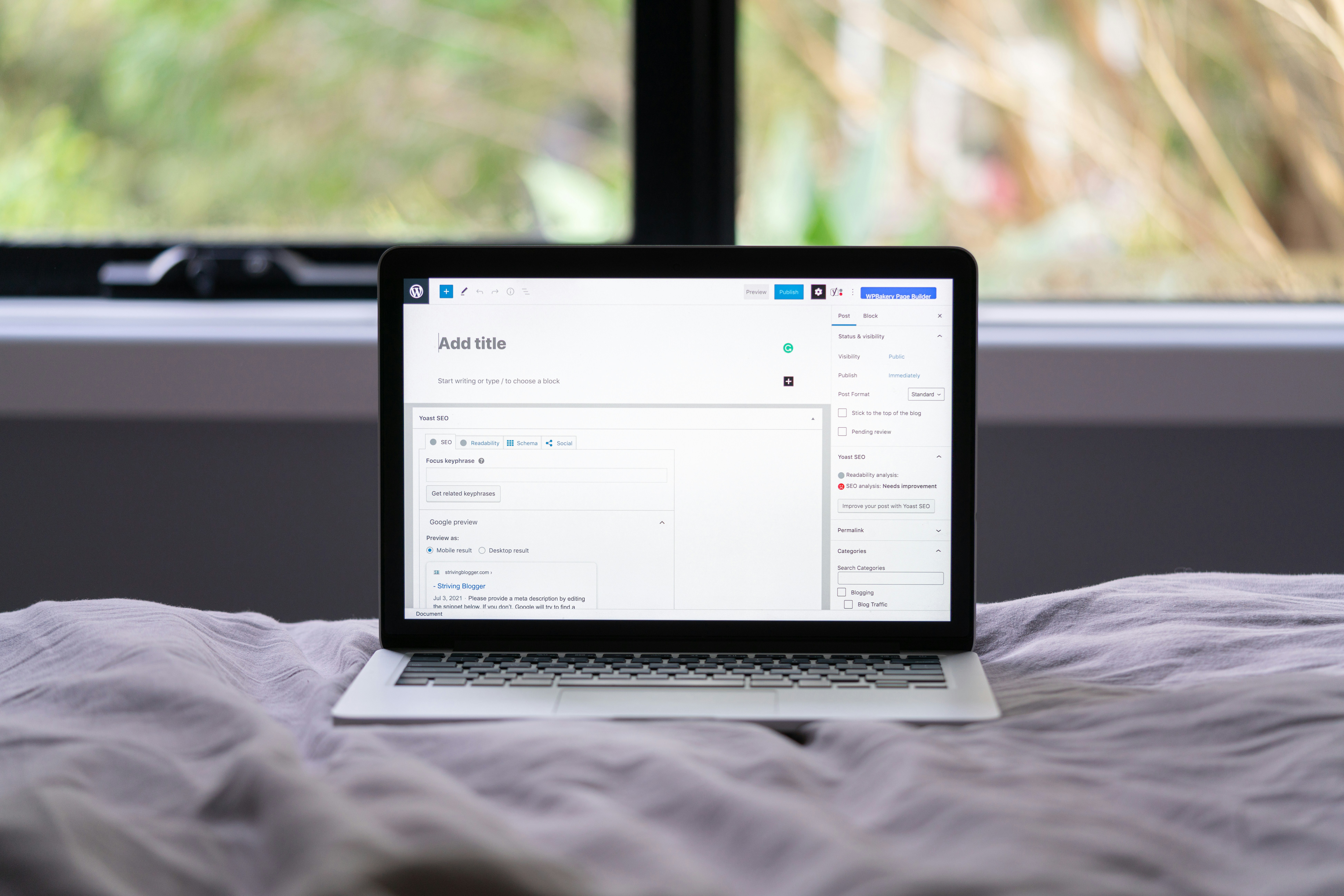Ready to kickstart your blogging journey? Look no further! In this article, you’ll find everything you need to know about starting a blog on WordPress. From valuable tips on crafting informative and captivating content to monetizing your blog and choosing the perfect niche, we’ve got you covered. Whether you’re a seasoned writer or just starting out, we’ll also guide you on how to gain the necessary qualifications and experience to create a successful blog. Plus, we’ll provide you with all the knowledge you need to navigate the user-friendly world of WordPress. So, let’s dive into this exciting adventure together!
Choosing a Niche
Identify your interests and expertise
When starting a blog, it’s important to choose a niche that aligns with your interests and expertise. Think about the topics you are passionate about and knowledgeable in. This will not only make the blogging process more enjoyable for you, but it will also help you produce high-quality content that resonates with your audience.
Consider your hobbies, professional background, and personal experiences. Are you a fitness enthusiast? A food lover? A travel junkie? Identifying your interests will give you a starting point for selecting a niche that you can consistently create content for.
Conduct market research
Once you have identified your interests and expertise, it’s crucial to conduct market research to ensure there is an audience for your chosen niche. Look for other blogs or websites covering similar topics and see if they have an engaged audience. This can be determined by looking at the number of followers, comments, and social media engagement they receive. Market research will help you understand the level of competition and the potential size of your target audience.
Select a profitable niche
After conducting market research, consider the profitability of your chosen niche. Are there opportunities to monetize your blog in this niche? Look for potential revenue streams such as advertising, sponsored posts, affiliate marketing, or selling digital products. It’s important to strike a balance between a niche that you enjoy writing about and one that has commercial viability.
Setting up a WordPress Account
Sign up for a WordPress account
To start a blog on WordPress, the first step is to sign up for a WordPress account. Visit the WordPress website and click on the “Get Started” button. Fill in the required information such as your email address, username, and password. Once you’ve completed the signup process, you will have access to your WordPress dashboard.
Choose a domain name
A domain name is the web address of your blog. It should reflect your blog’s topic or brand and be memorable and easy to spell. Take your time to brainstorm ideas and choose a domain name that is unique and represents your blog well. Make sure to check if the domain name you want is available and purchase it through a reputable domain registrar.
Select a hosting provider
Hosting is where your blog’s files are stored and made accessible on the internet. There are several hosting providers available, each with their own features and pricing plans. Compare different hosting providers, taking into consideration factors such as reliability, customer support, and pricing. Choose a hosting plan that suits your needs and budget.
This image is property of images.unsplash.com.
Customizing Your Blog
Choose a WordPress theme
The appearance of your blog is important to make a good impression on your audience. WordPress offers a wide range of themes that you can choose from to customize the look and feel of your blog. Consider the design, layout, and functionality of each theme. Opt for a theme that is visually appealing, user-friendly, and aligns with the branding and tone of your blog.
Install essential plugins
Plugins are additional software that can enhance the functionality of your blog. There are numerous free and premium plugins available for various purposes such as SEO optimization, social media integration, contact forms, and security. Install essential plugins that will help optimize your blog’s performance and provide a better user experience for your readers.
Configure blog settings
Once you have chosen a theme and installed necessary plugins, it’s time to configure your blog settings. Customize elements such as your blog’s title, tagline, logo, and menu structure. Set up permalinks to ensure your blog’s URLs are search engine-friendly. Configure your blog’s general, reading, and discussion settings according to your preferences. Take the time to explore the available options and make adjustments to create a blog that suits your vision.
Creating Compelling Content
Define your target audience
Before crafting your blog posts, it’s important to define your target audience. Consider the demographics, interests, and needs of your ideal readers. Understanding your audience will help you tailor your content to their preferences and provide value that resonates with them. This will ultimately lead to higher engagement and a more loyal following.
Develop a content strategy
A content strategy is a plan for consistently creating and distributing valuable content to your audience. Determine the types of content you will create, such as informative articles, how-to guides, listicles, or personal stories. Define the frequency of your posts, whether it’s daily, weekly, or monthly. Create an editorial calendar to organize and schedule your content. A well-thought-out content strategy will help you stay consistent and attract more readers to your blog.
Write engaging and valuable posts
When creating blog posts, focus on producing engaging and valuable content that captivates your audience. Use a friendly and conversational tone to make your readers feel like they’re having a conversation with a friend. Break up your text with subheadings, bullet points, and images to make it easier to read. Incorporate storytelling techniques and personal anecdotes to make your posts relatable. Remember to address the needs and interests of your audience and provide them with practical information or entertaining stories.
Optimize your content for SEO
Search engine optimization (SEO) is crucial for increasing your blog’s visibility and attracting organic traffic from search engines. Optimize your blog posts by including relevant keywords in your titles, headings, and throughout the content. Create meta descriptions that accurately summarize your posts and entice search engine users to click through. Use descriptive alt tags for your images and ensure your blog’s loading speed is fast. Implementing basic SEO techniques will help improve your blog’s rankings in search engine results pages.
This image is property of images.unsplash.com.
Promoting Your Blog
Utilize social media platforms
Social media is a powerful tool for promoting your blog and reaching a wider audience. Create accounts on platforms such as Facebook, Instagram, Twitter, or Pinterest and share your blog posts with your followers. Engage with your audience by responding to comments, asking questions, and sharing relevant content from other creators. Utilize social media scheduling tools to plan and automate your posts for maximum efficiency.
Engage with your audience
Engagement is key to building a loyal audience for your blog. Respond to comments on your blog posts, social media platforms, and emails promptly and thoughtfully. Encourage dialogue by asking questions in your blog posts or social media captions. Show genuine interest in your readers’ opinions, feedback, and suggestions. Building a community and fostering relationships with your audience will make them feel valued and keep them coming back to your blog.
Implement email marketing
Email marketing is an effective way to directly communicate with your audience and nurture relationships. Offer a subscription option on your blog where readers can sign up to receive updates and exclusive content. Send regular newsletters with curated content, insider tips, or exclusive offers. Personalize your emails and segment your subscribers based on their preferences or interaction with your blog. Email marketing helps keep your audience engaged and brings them back to your blog on a regular basis.
Collaborate with other bloggers
Collaborating with other bloggers in your niche can help you expand your reach and tap into their audience. Reach out to bloggers you admire or those with a similar target audience and propose collaboration ideas such as guest blogging, co-creating content, or cross-promoting each other’s blogs. Collaborations can introduce your blog to new readers and provide valuable backlinks that can improve your blog’s SEO.
Use SEO strategies to increase visibility
In addition to optimizing your content for SEO, there are other strategies you can implement to increase your blog’s visibility. Build relationships with authoritative websites and try to secure backlinks from them. Participate in online communities or forums related to your niche and share your expertise. Guest post on other reputable blogs to reach new audiences. Consistently create high-quality content that others will find valuable and want to share. These SEO strategies will help drive more organic traffic to your blog.
Monetizing Your Blog
Research different monetization methods
Once your blog has gained traction and has a solid following, it’s time to explore monetization options. Research different methods such as advertising, affiliate marketing, sponsored posts, digital product creation, or even offering consulting services. Each monetization method has its pros and cons, so consider your niche, audience, and personal preferences when determining which methods are most suitable for your blog.
Apply for ad networks
One popular way to monetize a blog is through advertising. Apply to reputable ad networks such as Google AdSense or Mediavine to display ads on your blog. Ad networks will serve relevant ads to your readers, and you earn a commission whenever a reader clicks on an ad or makes a purchase through the ad. Ensure that the ads are not overly intrusive and do not negatively impact the user experience of your blog.
Work with affiliate marketing
Affiliate marketing allows you to earn a commission by promoting other companies’ products or services. Join affiliate programs related to your niche and incorporate affiliate links within your blog posts or in your sidebar. Recommend products or services that you genuinely believe in and align with your blog’s content. Be transparent with your readers about the use of affiliate links and the potential commission you may earn.
Offer sponsored posts
Sponsored posts involve partnering with brands that pay you to create content featuring their products or services. As your blog grows, brands may reach out to you for collaborations, or you can actively pitch your ideas to relevant brands. Ensure that sponsored posts align with your blog’s niche and that you maintain transparency by clearly indicating when a post is sponsored. Providing valuable and authentic content in sponsored posts will help maintain trust with your audience.
Create and sell digital products
If you have expertise in a particular area, consider creating and selling digital products such as ebooks, courses, templates, or digital downloads. These products can provide additional value to your audience and generate income for your blog. Determine the needs and interests of your audience and create products that can help them solve a problem or enhance their knowledge. Promote your digital products through your blog, social media platforms, and email marketing.
This image is property of images.unsplash.com.
Building a Community
Encourage reader interaction through comments
Comments are a valuable way to engage with your audience and build a sense of community. Encourage readers to leave comments on your blog posts by asking questions or requesting their feedback. Respond to comments promptly and thoughtfully, showing appreciation for their input. Encourage discussion among readers by responding to comments left by other readers as well. A vibrant comments section can create meaningful conversations and encourage readers to return to your blog.
Respond promptly to comments
When readers take the time to leave comments on your blog posts, it’s important to respond promptly. Show genuine appreciation for their thoughts, answer any questions they may have, and engage in meaningful conversations. Prompt responses demonstrate that you value your readers’ input and encourages them to continue commenting and interacting with your blog.
Join blogging communities and forums
Participating in blogging communities and forums allows you to connect with fellow bloggers and learn from their experiences. Join online communities such as Facebook groups or forums where bloggers in your niche gather. Share your knowledge, ask questions, and offer support to other bloggers. Collaboration opportunities and valuable insights can arise from these communities, helping you grow your blog and expand your network.
Collaborate with other bloggers
Collaboration with other bloggers can help you tap into their audience and gain exposure for your blog. Seek opportunities to collaborate through guest blogging or co-creating content. Cross-promote each other’s blogs or collaborate on projects such as webinars or online events. By collaborating with other bloggers, you not only expand your reach but also establish yourself as an active member of the blogging community.
Organize giveaways or contests
Giveaways and contests are a fun and interactive way to engage with your audience and encourage reader participation. Offer prizes related to your blog’s niche that will excite your audience. Organize giveaways through social media platforms or your blog, and encourage readers to share the contest with their friends to increase exposure. Make sure to establish clear rules and guidelines for participation, and follow through with the giveaway or contest in a transparent and fair manner.
Tracking and Analyzing Your Progress
Set up Google Analytics
Google Analytics is a powerful tool that allows you to track and analyze the performance of your blog. Set up a Google Analytics account and install the tracking code on your blog to start gathering data. Google Analytics provides insights into important metrics such as blog traffic, user behavior, demographics, and more. This data will help you make informed decisions to optimize your blog and improve its performance.
Monitor blog traffic and user behavior
Regularly monitor your blog’s traffic and user behavior through Google Analytics. Analyze the sources of your traffic, whether it’s organic search, social media referrals, or direct visits. Understand which blog posts are the most popular and which ones generate the most engagement. By identifying patterns and trends, you can focus on creating content that resonates with your audience and attracts more readers.
Track conversion rates
Conversion rates measure the percentage of visitors who complete a desired action on your blog, such as signing up for your newsletter or purchasing a product. Use Google Analytics or other tracking tools to monitor your conversion rates. Evaluate the effectiveness of your call-to-actions and landing pages and make improvements if necessary. Tracking conversion rates will help you optimize your blog’s performance and increase your blog’s revenue.
Analyze content performance
Analyze the performance of your blog’s content to identify what resonates the most with your audience. Look at metrics such as page views, time on page, and bounce rate to determine which blog posts are engaging and valuable to your readers. Use this information to identify topics or formats that are popular and to guide your future content creation.
Make data-driven decisions
Data-driven decisions are crucial for the growth and success of your blog. Use the insights gained from tracking and analyzing your progress to make informed decisions about your blog’s strategy, content, and monetization methods. Experiment with different approaches, measure their impact, and adjust your strategies based on the data. By making data-driven decisions, you can continuously improve your blog and achieve your goals.
Learning and Staying Updated
Follow WordPress tutorials and blogs
To enhance your knowledge of WordPress and blogging best practices, it’s important to follow WordPress tutorials and blogs. These resources will provide you with step-by-step instructions, tips, and insights into optimizing your blog. Stay up-to-date with the latest WordPress updates and releases, security practices, and customization techniques. Continuous learning will help you make the most of your WordPress account and improve your blog’s functionality.
Join online blogging courses
Online blogging courses are a valuable resource for honing your blogging skills and gaining new insights. Look for courses that cover topics such as content creation, SEO optimization, social media promotion, and monetization strategies. These courses often provide in-depth guidance, practical exercises, and access to a community of fellow bloggers. Invest in your blogging education to sharpen your skills and stay ahead in the ever-evolving blogging landscape.
Attend blogging conferences and events
Attending blogging conferences and events provides opportunities for networking, learning, and gaining inspiration. Look for conferences and events in your area or consider attending virtual conferences. These events often feature expert speakers, workshops, panels, and networking sessions. Interacting with fellow bloggers and industry professionals can broaden your perspective, spark new ideas, and establish valuable connections.
Engaging with Your Audience
Respond to comments and messages
Engagement is key to building a loyal audience. Respond promptly and thoughtfully to comments on your blog posts, social media platforms, and emails. Show appreciation for your readers’ thoughts and input. Additionally, respond to direct messages or emails from your audience in a timely manner. By engaging with your audience, you build trust and establish meaningful connections.
Use storytelling techniques
Storytelling is a powerful way to captivate your audience and make your blog posts more engaging. Incorporate personal anecdotes, experiences, or case studies into your content. Use descriptive language and vivid imagery to paint a picture for your readers. By using storytelling techniques, you create a connection with your audience, evoke emotions, and keep them coming back for more.
Ask for feedback and suggestions
Your audience’s feedback and suggestions are invaluable in shaping the direction of your blog. Encourage your readers to provide feedback by asking questions in your blog posts or social media captions. Create polls or surveys to gather input on specific topics or ideas. Actively seek feedback on your blog’s design, content, or user experience. By involving your audience in the decision-making process, you make them feel valued and invested in your blog.
Run polls or surveys
Polls and surveys are effective tools for gathering insights from your audience. Use platforms like Google Forms or poll features on social media platforms to create polls or surveys related to your blog’s content or niche. Ask questions to gauge your audience’s preferences, opinions, or challenges. Analyze the responses and use the data to refine your content strategies or address your audience’s needs.
Host live Q&A sessions
Hosting live Q&A sessions provides an interactive opportunity to engage with your audience in real-time. Use platforms such as Instagram Live, Facebook Live, or YouTube Live to host these sessions. Announce the session in advance and encourage your audience to submit questions. During the session, answer their questions, offer advice, and share insights. Live Q&A sessions create a sense of community and allow you to connect with your audience on a deeper level.
By following these steps and implementing the strategies outlined above, you’ll be well on your way to starting a successful blog on WordPress. Remember, building and maintaining a blog takes time and dedication, so stay committed and enjoy the journey!



